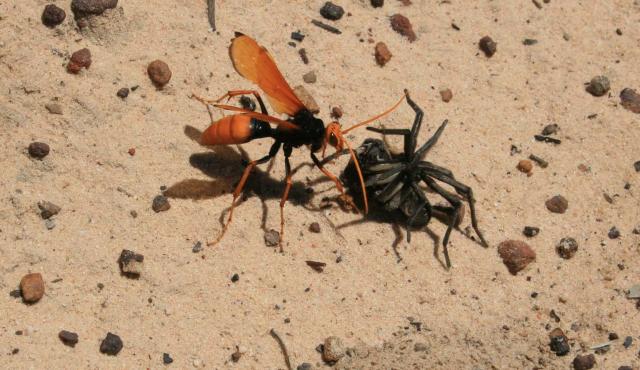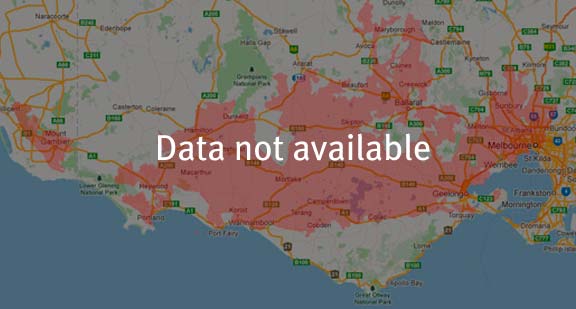A range of teacher professional learning programs will be developed to accompany the Biodiversity of the Western Volcanic Plains online outreach...

Orange Spider-wasp
Cryptocheilus bicolor
Female wasps prepare nest chambers for their larvae by digging a burrow using long spines on their front legs.
| Details | Description |
| Type | Invertebrate |
| Group | Insect - Wasp |
| Identifying Characteristics | |
| Distinctive Markings | Broad orange bands on the black abdomen. |
| Diet | Carnivore. Prey includes Huntsman spiders and Wolf spiders. |
| Habitat | Urban areas, forests and woodlands, wetlands and heath. |
| Native Status | Native to Australia |
| Bites/Sting | Causes a burning pain and swelling. |
| Taxonomy | |
| Phylum | Arthropoda |
| Class | Insecta |
| Order | Hymenoptera |
| Family | Pompilidae |
| Genus | Cryptocheilus |
| Species | bicolor |

Distribution maps indicate current and historic locations where species have been sighted.
Source: Atlas of Living Australia
| Conservation Status | |
| DEPI Advisory List | Not listed |
| FFG Act | Not listed |
| EPBC Act | Not listed |
The conservation status of species is listed within Victoria and Australia.
The Department of Environment and Primary Industry (DEPI) Advisory List consists of non-statutory advisory lists of rare or threatened flora and fauna within Victoria.
The Flora and Fauna Guarantee Act 1988 (FFG Act) lists threatened species in Victoria. Under the Act, an Action Statement is produced for each listed species.
The Environment Protection and Biodiversity Conservation Act 1999 (EPBC Act) is the Australian Government’s key piece of environmental legislation, listing nationally threatened native species and ecological communities.



